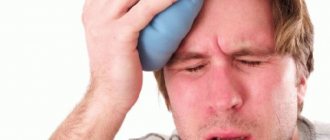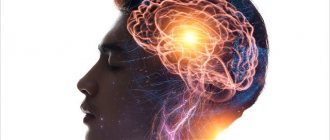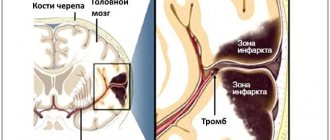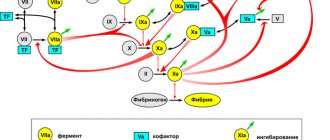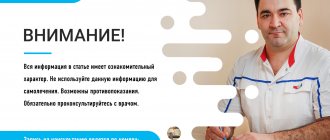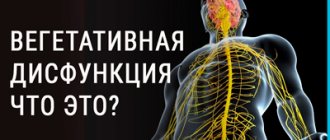One of the common problems faced by modern people living in large cities and metropolises is throbbing pain in the temples. This symptom is an integral part and sign of many diseases and often turns out to be an alarming call to the presence of a serious pathology in the body of a person suffering from a headache.
Painful sensations arising in the temporal region are probably familiar to each of us; at least once in their life, every person has experienced a throbbing headache in the temples. Pain can occur on both sides or separately in the right or left temple. According to the sensation, the majority of the examined patients note that pain localized in the temporal areas and having a pulsating nature has a much greater intensity in comparison with diffuse or classic headaches.
Glaucoma:
Throbbing pain on the right side of the head can begin in those who have a disease such as glaucoma. In this case, a person feels an increase in intraocular pressure, during which the eyes hurt, the eyelids turn red, nausea, weakness appear, and vision deteriorates. The insidiousness of this disease is that at first it does not manifest itself in any way.
If throbbing pain in the head is present in the back of the head, then it may indicate some kind of infectious disease, or if there are tumors in the brain. But these diseases can be reliably stated when pulsation occurs regularly. If these are isolated cases, they occur in the following conditions:
- when a person drank coffee and abruptly gave it up. Ripple occurs because the vessels cannot quickly return to normal after an overstrained state;
- when smoking;
- during an incorrect position during sleep;
- after experiencing overvoltages of various types.
Such pain goes away when a person quits smoking, gives up coffee and is less nervous about various little things.
What is atrial scotoma?
By ocular migraine, experts mean a type of headache with a complex of neurological manifestations, including visual abnormalities. The pathology was first described in the 19th century, but the mechanism of its occurrence was presented in more detail by modern physiologists. It is believed that the tendency to ocular migraine is inherited genetically through the female line. Men suffer from it in isolated cases.
Atrial scotoma has no direct relation to ophthalmology; however, during an attack, serious disturbances in visual perception may occur. According to statistics, pathology is a companion to the physiological and physical maturation of the body, that is, at a young age. Due to the instability of the autonomic nervous system, attacks can recur several times a month. In older age, migraine bothers people who have to experience visual stress for a long time.
Linear progression is not typical for atrial scotoma. The attacks arise and subside spontaneously. Complications do not occur even after prolonged exacerbations, although at the peak of pain, complete loss of vision is possible. After relief of the main neurological symptoms, the ability to see is restored independently.
Types of throbbing pain in the head in various diseases
If a person focuses on his sensations in the back of his head, understands how long the pulsation lasts and what its frequency is, he can himself determine the presence of a particular disease.
- If the pulsation begins in the morning and there is a feeling of heaviness in the head and an increased heart rate, this is a sign of pressure changes, often hypertension. In some cases, along with these signs, pain in the temples is observed.
- Regular pulsation in the temples of the head indicates the presence of VSD. Often dizziness and nausea are added to the pulsation.
- A slight throbbing pain in the back of the head and a feeling that the pain is radiating to the ear or jaw is the result of hypothermia or the onset of a cold or infection.
- Pulsation in the back of the head and temporal part, as well as in the temples, and this pain is accompanied by weakness throughout the body, perhaps blood vessels are pinched somewhere or a spasm has occurred.
- Symptoms of cervical migraine are sudden attacks of pulsation, while flashes appear in the eyes.
- With cervical osteochondrosis, a strong pulsation occurs in the back of the head, in addition, it becomes dark in the eyes and noise in the ears appears.
- Pain in the back of the head, which spreads to the right side of the head, in the temple area, indicates a strong jump in intracranial pressure, migraine or vasospasm.
Causes of headaches in the temples and dizziness
Such symptoms can be present both in healthy people and as a consequence of the development of various diseases. In the first case, pressing sensations in the temples and dizziness may be a consequence of the influence of external factors:
- alcohol intoxication;
- overfatigue, especially during high physical or mental stress in combination with disturbances in sleep and rest patterns;
- unbalanced nutrition and fasting;
- regular stress and nervous exhaustion;
- climate and time zone changes.
In such cases, there is usually no direct danger to human health, and to eliminate discomfort it is enough to eliminate the causative factor, i.e., reconsider your diet, schedule and working conditions, etc.
It is not uncommon to feel dizzy and have pain in the temples when staying in a stuffy room for a long time. These symptoms disappear after exposure to fresh air.
But also discomfort and pain in the temples with dizziness of varying intensity may indicate the development of pathological changes in the body, which, if left untreated, will progress and provoke a deterioration in the general condition and aggravation of symptoms. There are practically no pain receptors in the bone structures of the skull and brain tissue, and therefore they simply cannot hurt. The main sources of discomfort are blood vessels, meninges and cranial nerves. Therefore, if you regularly feel pressure in your temples and feel dizzy, you should find time and consult a doctor, because this may indicate:
- arterial hypertension;
- migraine;
- traumatic brain injury (TBI), including previously received;
- vertebrobasilar insufficiency.
Sometimes a feeling of pressure and bloating in the temples appears after eating foods containing sodium nitrite. These are usually a variety of sausages or Chinese dishes. For such cases, they even selected the appropriate terms: “sausage” headache and Chinese restaurant headache. They are a consequence of the body’s increased reaction to sodium nitrate, which leads to changes in the tone of blood vessels and, accordingly, fluctuations in blood pressure.
Arterial hypertension
High blood pressure is one of the most common causes of headaches in the temples and attacks of dizziness. This is often combined with pain in the back of the head, nausea, vomiting, deterioration in coordination of movements, redness of the face, as well as visual disturbances in the form of flickering spots before the eyes, etc.
The disease develops against the background of weakness of blood vessels, a decrease in the strength and elasticity of their walls, narrowing of the lumen as a result of the development of atherosclerosis, the development of kidney diseases, including pyelonephritis, glomerulonephritis, polycystic disease, etc. An increase in blood pressure can be established at home using mechanical, semi-automatic or automatic tonometer.
Normal blood pressure values are considered: systolic (upper) 110–130 mm Hg. Art. and diastolic (lower) 70-80 mm Hg. Art. High blood pressure is indicated by readings of more than 130/80, and arterial hypertension by more than 140/90.
Factors that provoke an increase in blood pressure are stressful situations, excessive tension and heavy physical activity. Often, in people suffering from arterial hypertension, attacks are caused by changes in weather conditions.
Arterial hypertension, even moderate, cannot be ignored. A periodic increase in blood pressure, especially to high values, should be contacted by a cardiologist, since in such cases the risk of stroke increases sharply. Weakened blood vessel walls may not withstand high blood pressure and rupture, which can lead to bleeding in the brain, i.e. hemorrhagic stroke.
Migraine
Migraine is a very common problem today. It is characterized by pain not only in the temples, but also in the area of the eye, forehead, or covering one half of the head completely. In this case, migraine is always paroxysmal in nature and most often one-sided, although with each attack the side of the pain localization can change, as well as cover both halves of the head at the same time.
The hallmark of a migraine is a throbbing, bursting pain, the intensity of which often increases gradually over several hours. It can occur at any time of the day, although more often the attack begins in the morning. This may be accompanied by:
- dizziness;
- visual disturbances;
- increased photosensitivity;
- nausea and vomiting.
With migraines, increased pain is provoked by any body movements, but especially by the head and climbing stairs. Many patients with this diagnosis complain of deterioration in health when hearing loud noises, so during an attack, most of them try to stay alone in bed in a quiet, darkened room.
In some patients, an attack is preceded by an aura, that is, certain, strictly individual precursors appear. Some patients notice that they feel dizzy a few hours before the headache occurs, others talk about loss of visual fields, others pay attention to speech impairments or a combination of similar symptoms.
A migraine attack can be triggered by various external and internal factors, in particular:
- changes in weather conditions;
- diet disorders and alcohol consumption;
- stressful situation;
- lack of sleep;
- taking certain medications, etc.
In this case, attacks can last for several hours or several days. This, combined with a high intensity of pain and the inability to perform one’s household and professional duties, significantly reduces a person’s quality of life. Therefore, if symptoms characteristic of migraines appear, it is worth contacting a neurologist and accurately describing how the attack begins, assessing the severity of pressure in the temples, the characteristics and nature of dizziness (are the surrounding objects spinning or is there a sensation of one’s own body rotating in space, is there an unsteadiness in gait or faintness). condition, etc.).
TBI
You may feel dizzy and have pain in your temples even after receiving a traumatic brain injury, and these symptoms can occur even some time after the action of the traumatic factor. Moreover, they can even be called typical for the recovery period.
TBI most often results from hitting the head on a hard surface. This is not always accompanied by a fracture of the skull bones, although it does not exclude it. In the acute period, i.e. immediately after injury, confusion, drowsiness, headache, vomiting, and nausea may be observed. In such cases, it is necessary to immediately go to an emergency department equipped with an MRI scanner, since severe impacts to the head can provoke the formation of intracranial hematomas, rupture of blood vessels and other serious complications that can be fatal. Subsequently, all patients will need to follow bed rest and other doctor’s recommendations.
Vertebro-basilar insufficiency
Vertebro-basilar insufficiency is a condition in which a disruption of the blood supply to the brain occurs due to a decrease in the lumen, compression of the arteries supplying it: 2 vertebral and/or basilar. A decrease in the volume of blood supplied to brain cells leads to their oxygen starvation. But it is the brain that is the most sensitive organ to hypoxia, and its long-term preservation can have extremely undesirable and dangerous consequences.
Impaired blood supply to the brain provokes a deterioration in its functioning, which is accompanied by:
- headache, often in the temple area;
- dizziness;
- general weakness and decreased performance;
- nausea;
- hearing loss and tinnitus;
- visual impairment, including the flickering of spots before the eyes.
Patients often notice a deterioration in cognitive abilities: concentration, memory.
Vertebro-basilar insufficiency is not a separate disease, but becomes a consequence of the development of pathologies of the blood vessels or the cervical spine. It is often provoked by atherosclerosis, if plaques form in the walls of the blood vessels of the vertebrobasilar region, as well as inflammatory processes in them.
No less often, cerebrovascular accidents and associated headaches and dizziness are caused by pathologies of the cervical spine. These include osteochondrosis, spondylosis, protrusions and herniated intervertebral discs. Their development is based on degenerative-dystrophic changes in the intervertebral discs, as a result of which they become deformed. This is initially accompanied by a crunch in the neck when moving and aching pain as a result of exacerbation of inflammation. Gradually, pathological changes progress, disc tissues lose elasticity, which creates the preconditions for the formation of protrusions, and then intervertebral hernias. In parallel with this, changes can occur in the vertebral bodies themselves with the formation of osteochondral growths on their surface - osteophytes.
The convergence of the vertebrae against the background of osteochondrosis, protrusions, which are protrusions and hernias, as well as osteophytes can mechanically compress and irritate the walls of the vertebral arteries. This leads to a decrease in their lumen and the development of vertebrobasilar insufficiency with pain in the temples and dizziness.
There is a throbbing pain in the head: when should you see a doctor?
There are situations in which a visit to the doctor is inevitable, and the sooner the better for a person to dull the pain at an early stage. So, you should visit a doctor if:
- The throbbing pain does not go away for several hours.
- Intense pain does not stop for several days and brings significant discomfort
- Pain in the back of the head begins in the early morning.
- If the pressure increases during pulsation, you must definitely call an ambulance to avoid a hypertensive crisis.
Drug treatment of temporal headaches
When choosing a treatment method for headaches in the temporal region, doctors at the Yusupov Hospital take into account the reason why it occurs. Treatment for tension headaches includes relief of painful episodes and preventative treatment.
In order to interrupt an attack of headache in the temples, simple analgesics and non-steroidal anti-inflammatory drugs are prescribed. Treatment with these drugs should be used when the frequency of attacks is no more than twice a week. The use of simple analgesics should not exceed 14 days per month. The use of any medications for pain relief is monitored by keeping a diary. In patients with chronic headaches and comorbid depression and anxiety, simple analgesics are usually ineffective, and excessive use of nonsteroidal anti-inflammatory drugs can lead to the development of drug dependence.
Patients are prescribed ibuprofen at a dose of 400 mg. It has the least potential to cause gastrointestinal complications. Frequent use of paracetamol in large doses can cause liver damage.
Preventive therapy is carried out for patients with chronic tension headaches. Antidepressants are most often used to prevent pain in the temples. Their effect is due to their own analgesic effect due to increased activity of descending analgesics. The analgesic effect of antidepressants occurs earlier than the antidepressant effect itself and when using smaller doses. The drug of first choice is amitriptyline. Other tricyclic and tetracyclic antidepressants, maprotiline, clomipramine, and mianserin, are also used.
For severe headaches in the temporal region, you can take a simple analgesic or ibuprofen. If the pain does not go away, seek specialized medical help by calling the Yusupov Hospital.
Treatment
Before starting treatment, you must visit a neurologist, ophthalmologist and therapist. In some cases, you need to contact an infectious disease specialist. Since all doctors unanimously insist that headaches should not be tolerated under any circumstances, you need to take one of the following medications:
- Citramon;
- Farmadol;
- No-shpa;
- Aspirin.
Even if a strong pulsation is felt, the dosage of the above medications cannot be exceeded, since the body will not receive any benefit. After taking the tablet, you need to lie down in silence, because any physical activity leads to a significant increase in pain.
After the doctor has found out the cause of the throbbing pain in the left side of the head, right or back of the head, the patient, in addition to treatment, needs to carry out the following procedures to normalize the body’s condition:
- Perform a warming massage in order to warm up the blood vessels and improve the condition of osteochondrosis and neuralgia. In addition to massage, manual therapy will help improve your well-being.
- A soft and gentle massage will alleviate the condition of intracranial hypertension.
- Japanese acupressure will improve your well-being for various types of pain.
- Regularly measuring blood pressure and bringing it back to normal in a timely manner will help eliminate throbbing pain.
- Physiotherapy will be appropriate for osteochondrosis, neuralgia, increased intracranial pressure and various vascular changes.
- Doctors prescribe physical therapy for all types of throbbing pain.
- Surgery is inevitable for tumors and other serious diseases.
As you can see, throbbing pain in the head is a symptom of many diseases. Therefore, you must definitely consult with a specialist or call an ambulance, because home methods can only get rid of mild pain.
Prevention
All preventive measures are aimed at preventing vascular diseases, diseases of the brain and hearing organs. To prevent hypertension, hypoxia, atherosclerosis and other diseases, it is important to give up bad habits, eat right, and maintain normal physical activity, since a sedentary lifestyle negatively affects the functioning of the cardiovascular system.
If work involves high noise levels, earplugs should be used to protect your hearing.
It is also necessary to avoid falls, stress, and exposure to high-level noise, which can cause damage to the eardrum or auditory neuritis. If you have any health problems, you should immediately go to the hospital.
Diagnosis of ocular migraine
To diagnose atrial scotoma, ophthalmologists use classical research methods:
- collection of anamnesis, which establishes a hereditary predisposition to ocular migraine;
- examination of the anterior chambers of the eye and assessment of the condition of the pupils, the range of their movements, and reaction to light;
- ophthalmoscopy, revealing slight hyperemia of the conjunctiva, a difference in pupil diameter and lack of reaction to light on one or both sides, spasm of the retinal arteries with simultaneous dilation of the veins;
- perimetry, indicating a narrowing of the visual fields in the affected eye;
- angiography of the head or MRI of the brain, which detect vascular abnormalities that can provoke atrial fibrillation, areas of ischemia in the cerebral cortex, areas of cerebral edema, dilatation of the ventricles and subarachnoid space.
The form and type of ocular migraine can only be determined with repeated attacks. Comparison of at least 5 pathological manifestations helps differentiate atrial scotoma from superior orbital fissure syndrome.

